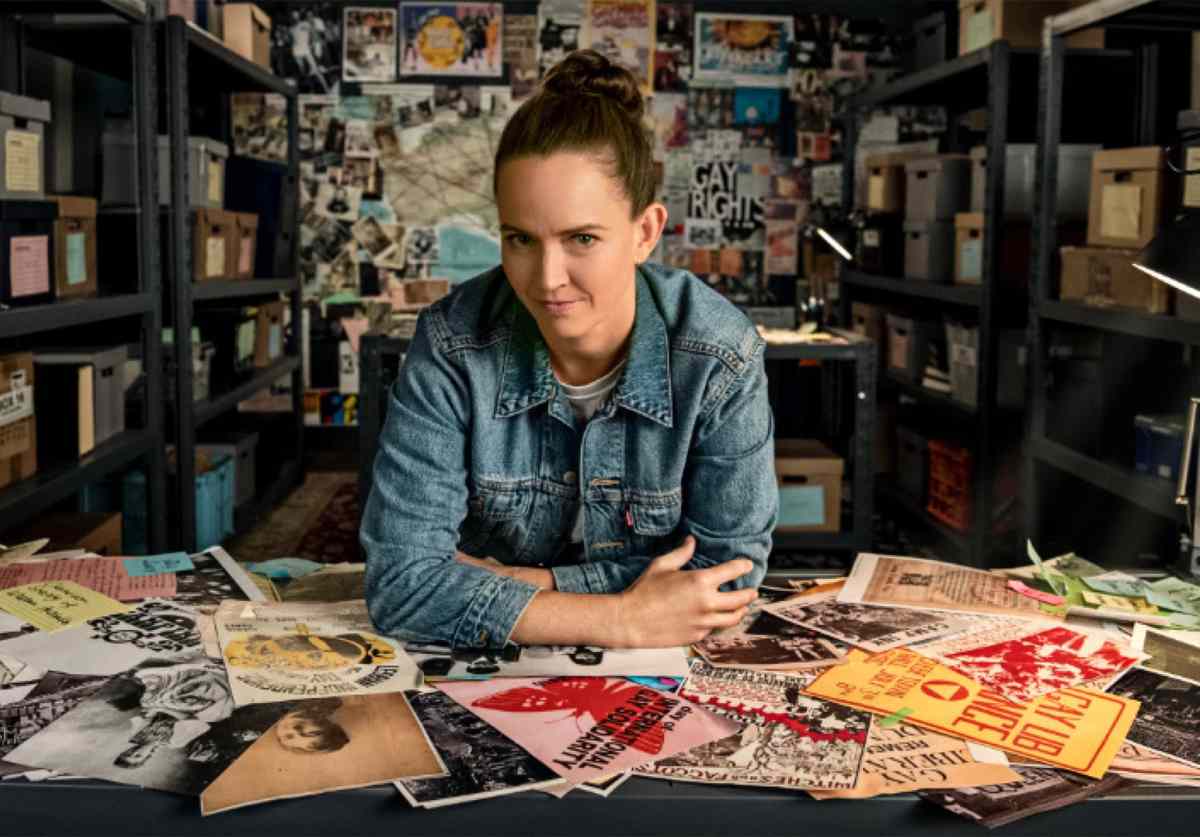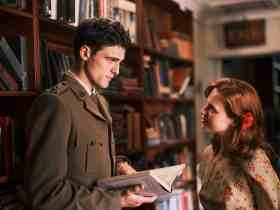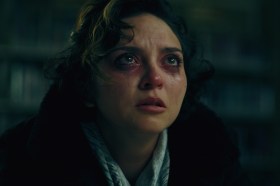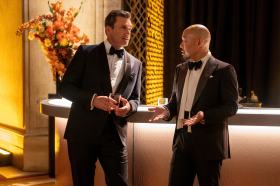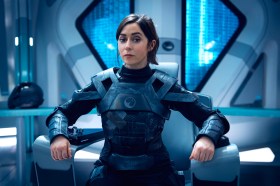If you’ve ever been to one of Zoë Coombs Marr’s rave review comedy shows, you’ll have an inkling of what to expect when she takes on the seemingly impossible task of recording the grand sweep of LGBTIQA+ Australian’s history from pre-colonisation on, in three-part ABC docuseries Queerstralia.
If you know, she knows you know too, which is why episode one opens with her trademark meta-narrative hijinks and timey-wimey mischief smartly deployed to unravel difficult stuff in a thoroughly engaging way.
The show begins in an office in what looks like your average gritty SBS crime drama (sorry, ABC), file boxes are stacked high, with documents and photos scattered across a desk and pinned to the wall, joined with obligatory red string. Marr knows that getting to the bottom(s – there’s a lot of gloriously irreverent chat about “bum sex”) of any vaguely complete history of queer Australians is a fraught task: ‘I’m a comedian, I’m not qualified.’
This is largely because the British invasion force and subsequent penal colonies tried their darndest to wipe out such blasphemous acts of homosexuality and non-binary gender identity. Indeed, all over the globe, official records have spent thousands of years obscuring our stories (gay men are a wee bit easier to track because of their regular appearance in criminal records). Props for the corking line: ‘In short, the penal colony was too penile.’”’
You see, men-on-men sodomy was the primary concern. Hence, we open on a sweeping aerial view of Gun Island, and the first known record of homosexuality on these shores. Only this was actually the Dutch ship Zeewijk, marooned on the waters of Southern Yamatji Country.
A narrator, in the gravitas-laden voice of such things, announces that it’s 1727. Marr immediately interjects that obviously it’s not, because they didn’t have film cameras back then, setting the tone.
Unperturbed, the narrator continues, noting that the captain’s log records two queer men. Marr replies, ‘Ooooh, this should be fun’. Not quite. They were found ‘committing the abominable sin of Sodom and Gomorrah’. Burning fuses were placed between their fingers to force a refused confession. They were abandoned (presumably to die alone) on separate islands.
As Marr notes, they’re not the main characters in the Zeewijk story, as all too often queer people aren’t in historical tracts. ‘We’re just tiny, grim cautionary tales in the margin, which is unfair. There’s gotta be more than that.’
And there is. So. Much. More. We know, logically, that LGBTIQA+ people were always here, even when they weren’t getting bashed by the cops and thrown into jail on spurious charges, or, as in one shockingly memorable scene, spied on from a drill hole in the attic and ‘caught’ in the act of making love in their own home (thanks, landlady who let this happen).
It wasn’t imported by Europeans either. Marr ensures this history isn’t cis white men centric. She’s recruited a vast array of contemporary queer authors, historians, activists, actors and more to help piece this important story together.
They include Kurnai/Gunai, Gunditjmara, Wiradjuri and Yorta Yorta writer Nayuka Gorrie, who focuses on First Nations peoples with her playful nudge about it not being Marr’s story to tell. Gorrie is also a great presenter who’s clearly having as much fun as Marr is in poking and prodding the loose ends of official records to tease out obscured truths.
Marr also talks to fellow comedians, including Hannah Gadsby and Magda Szubanski, and filmmakers like Tony Ayres, all while teasing out the incredible stories of people like trans scholar, activist and dedicated sex worker supporter Roberta Perkins and the lesbian street gangs who flouted their wares proudly while flying under the not-criminalised radar.
It’s underlined, time and again, that much of the law’s draconian approaches are tied back to the British empire and exported worldwide to heinous effect, as spoken about powerfully by Todd Fernando, the Victorian Commissioner for LGBTIQ+ Communities and a descendant of the Kalarie peoples of the Wiradjuri nation.
Marr notes that there were queer and trans First Nations peoples here waaaay before the British arrived, and worldwide too, noting in one pithy aside that ‘the Greeks didn’t invent sodomy, but they may have been the first to put it on kitchenware’. Later episodes promise to connect with Brotherboys and Sistergirls, including drag queen Crystal Love.
Marriage equality proponent Rodney Croome fills us in on how Tasmania held onto punitive laws for so long, only to take great strides forward in recent years. Of course, the Daughters of Bilitis, CAMP and the Mardi Gras marchers of 1978 are present and correct; this is just the first episode.
With two more to go, Queerstralia is already a glowing tribute to the people who refused to conform, who stood up to be counted and pushed back against persecution. It’s all handled in Marr’s trademark cheeky delight, in the way of the very best documentaries that aim to reach out across arbitrary demarcation lines (here’s looking at you, Salamanca Market) and restore queer heroes to the centre of the story.
When Marr’s lovely dad asks her why she’s making this series, her equally lovely answer says it all: ‘I guess it’s about finding where you fit and where you come from.’
Actors:
Director:
Format: Movie
Country:
Release:
